SLV Water and CZU Fire Recovery: An Update from the San Lorenzo Valley Water District
July 8, 2021
By Julie Horner
An interview with Rick Rogers, Director of Operations and Nate Gillespie, Water Treatment & System Supervisor at San Lorenzo Valley Water District
On Wednesday, July 7, the San Lorenzo Valley Water District hosted a media tour of the Lyon Surface Water Treatment Plant and offered an update on progress since the CZU fire nearly a year ago. According to Rick Rogers, Director of Operations, there are two things taking precedence.
Damage from the CZU hindered the ability of the District to be able to use surface water. Rogers said, “In a normal year, we use approximately 50% surface water to serve our customers.” He said, “We’re making it up with well water.” That works for the short term, but prolonged use cannot be sustained.
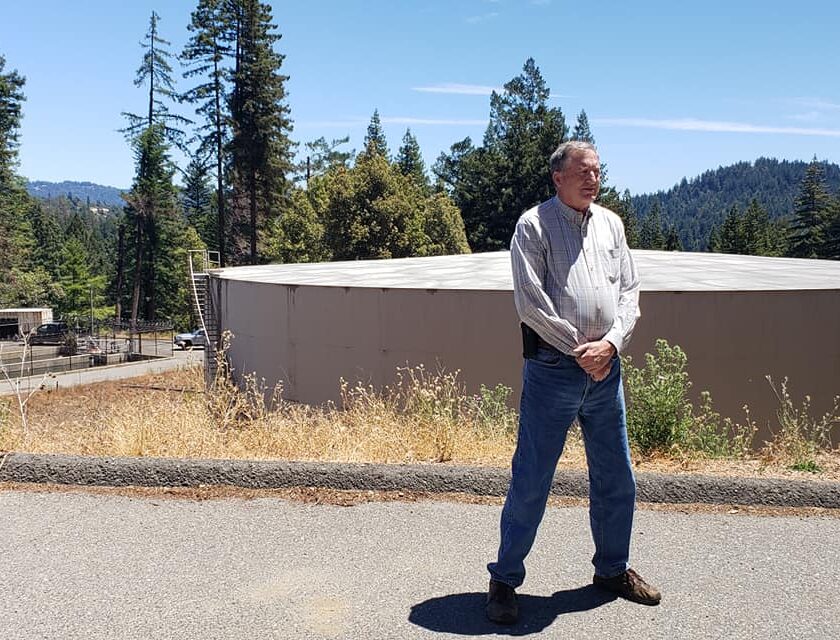
The second problem is drought, which is impacting well field water levels. “We’re bringing water up from the Ben Lomond and the Zayante area, where normally the water would be produced here on Ben Lomond Mountain.” All the water supplied to customers in the San Lorenzo Valley is generated by rainfall. Rogers said that 50.5 percent of the valley’s water is stored in the tanks located at the treatment facility in Boulder Creek. Additional water is stored in smaller tanks throughout the District’s delivery system. After physical filtering and chemical treatment inside the plant, the water sits in the main storage tanks at the treatment plant for a prescribed amount of time, about three days, before it can be moved to other tanks.The large storage tank at the Lyon facility holds three million gallons, the smaller one is a million and a half, and other smaller tanks on the grounds hold several thousand gallons.
The District owns the watershed from the treatment plant all the way over to China Grade, about 1,600 acres. Rogers said, “100% of that acreage was impacted by fire.”
The District lost seven miles of high-density polyethylene (HDPE) pipe in the CZU fire. During the fire, Rogers said, “All the pipe melted below the storage tanks, and all five million gallons went right out onto the road and down into the creek in a 12-hour period.” During cleanup, the Environmental Protection Agency sent bins to haul away hazmat debris from the riparian corridors along the creeks. Crews even took away soil to reduce the chance of contamination. And while the storage tanks are made of steel and survived the fire, the pipe acted like a chimney, so the toxic smoke and soot pulled up into the melting pipe and came out in the tanks, coating them inside with residual HDPE. One of the tanks they were able to power wash clean, the other was so thickly coated inside that they had to sandblast to remove the toxic coating.
To make room for replacement pipe, 400 danger trees had to be taken down along the District’s delivery system route. And mountain residents will remember the day in early September, 2020, when a helicopter ferried bundles of new pipe in 40-foot lengths between downtown Boulder Creek and the Lyon facility because the road to the treatment plant is too steep and narrow for ground delivery. Looking forward, Rogers said he hopes to be able to get all their ground water sources back online within the next three years.
On the road to recovery, the SLVWD has submitted a list of CZU wildfire emergency response projects to the Federal Emergency Management Agency (FEMA) as part of a request for public assistance. Rogers said it’s a slow process going through FEMA approval. It is hoped that FEMA will cover 75% of recovery costs while the District must come up with 25%. “They’re evaluating all of our projects, what’s eligible and what’s not, and at the same time we’re developing facility designs to go out for bids.” Rogers said. First, the raw water lines will require a constructability study, which is a three-month process. Then there’s a six-month process for plans and specifications. Survey and environmental work will have to be completed. “Once all plans and specifications are done, we’ll go out to bid and be able to rock and roll,” Rogers said.
Even without FEMA, the district will move ahead with making some repairs. The District has taken out a low interest loan to cover about five million in up-front construction costs. To protect critical infrastructure projects in the works and to avoid financial hardship from unplanned costs due to the fire, the District is proposing a wildfire recovery surcharge of about $10 a month to be added to customer bills, per connection, over five years to cover this output. “We’ll evaluate that year in and year out. It is a surcharge, so once we hit five million, it will come off the bills.”
The District is in a 45-day customer notification process in accordance with Proposition 218, a voter approval requirement for local tax increases, which gives ratepayers a chance to review and the opportunity to protest the surcharge proposal. The SLVWD Board will then hold a public hearing to adopt or reject the surcharge. “So far customer reaction has been positive,” Rogers said, “Although with any type of rate increase there’s always folks who want more information and have concerns. There are a lot of low-income folks, and because of covid, a lot of folks who are not back to work. We understand that.”
A notice was mailed to SLVWD customers in late June. Included in the packet is a Protest Ballot, which must be filled out and signed, then mailed, emailed, or dropped at the SLVWD Main Office at 13060 Highway 9 in Boulder Creek by Thursday, August 5, 2021. The public hearing via Zoom to consider whether to adopt or reject the proposed surcharge occurs on Thursday, August 5, 2021 at 6:30.
Water Safety Always a Concern
Nate Gillespie, Water Treatment & System Supervisor said, “When the fire came through the area here, we know from past urban forest interface fires that these fires burn really hot, and if there’s any sort of plastic piping, it melts and there’s potential for volatile organic compounds (VOCs). Primarily benzine contamination.” After the fire came through and prior to repopulation, as a precaution, the SLVWD and the State Water Resources Control Board issued a do not drink, do not boil water advisory for any neighborhood that was impacted by the fire. SLVWD carried out testing and detected benzine in the Riverside Grove neighborhood and a few sample sites. One early test sample came back at 20 parts per billion, and the maximum level for the state is one part per billion, according to Gillespie. These areas were flushed until tests came back “non-detect”, and by October, nearly two months after the fire, the utility was able to lift the last Do Not Drink/Do Not Boil advisory. “Water distribution networks are a very dynamic system, and you can’t always predict flows.” Experts have learned from the Paradise and Camp fire disasters that there is always the risk of recontamination.
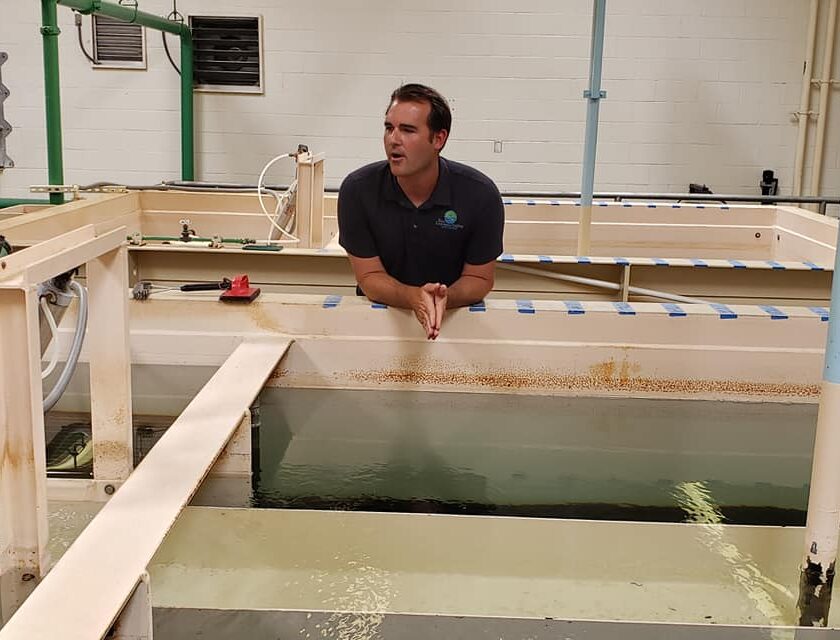
SLVWD has since submitted to the regulatory agency for approval a long-term VOC monitoring plan. They plan to monitor for VOCs throughout the water distribution system until at least December of 2022. The long-term VOC detection plan was established so the District can alert customers at any time if VOCs are detected. Gillespie said, “In the long-term plan we were testing monthly for six months, and our provisions were that if we didn’t detect any VOCs above maximum contaminant levels (MCLs) in those first six months, we would move to quarterly monitoring.” That being said, in the Riverside Grove neighborhood, where they initially detected benzine, they are still monitoring on a monthly basis. The good news: They have not detected any VOCs above MCLs since September of 2020, following the fire.
For those concerned about rebuilding, Gillespie said that contaminants from any burned structure have the potential to be back-siphoned into the distribution system, so crews removed the service lateral from every structure that was burned throughout the entire SLV water distribution system. The service lateral is the line from the water main to the customer meter. “So the homes that want to rebuild on that site will have to reapply for service prior to reconnection,” Gillespie said. “The wait for the application process is about one-month turnaround before that connection can be reestablished.”
The Lyon facility also boasts an Environmental Laboratory Accreditation Program (ELAP) certified lab, which allows technicians to run bacteriological analysis in-house. “Part of our routine monitoring is collecting roughly about 15 to 20 samples per week for coliform bacteria as well as monitoring our chlorine residual to ensure that disinfectant is maintained throughout the distribution system,” Gillespie explained. Coliform bacteria species are used as an indicator species. If present, there is a possible source of contamination in the distribution system. Any positive coliform detection must also be tested for e coli, which they also do at the facility. E Coli indicates fecal contamination in the network. “At that point we’d contact the regulatory agency to issue a do not drink. We have not had any detection in six years,” Gillespie said. They can monitor the system 24/7 for the quickest turnaround possible. “If we get an odor or color complaint from a customer, we can run out there, take a sample, and run the test right away.”
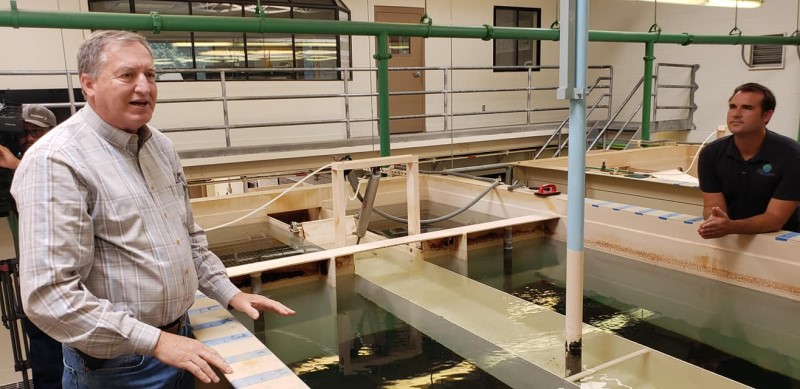
According to Rogers, 95% of the District’s water tanks, all of the pumps, all sources of supply, and hundreds of alarm types are managed by a high-efficiency monitoring system called SCADA, which uses a series of sensors throughout the system to send data to the lab’s Human Machine Interface (HMI). Usable data is collected and controlled by a network of computers and smartphones to check water and pressure levels, measure well depth, control flow, and verify and activate standby generators, among other things, to optimize the water distribution system.
The hope is that ongoing transparency coupled with rapid customer alerts will encourage trust in the SLVWD. Gillespie said, “It’s our job to deliver safe drinking water, and we all take that job very seriously.”
And fire is always a concern, Rogers said. “From the experience last year, we’ll know what to expect. The San Lorenzo Valley is used to taking care of themselves. Earthquakes, floods, and so forth. So we’re pretty well prepared. Our staff is well trained and we have the equipment.”
The San Lorenzo Valley Post is your essential guide to life in the Santa Cruz Mountains. We're dedicated to delivering the latest news, events, and stories that matter to our community. From local government to schools, from environmental issues to the arts, we're committed to providing comprehensive and unbiased coverage. We believe in the power of community journalism and strive to be a platform for diverse voices.

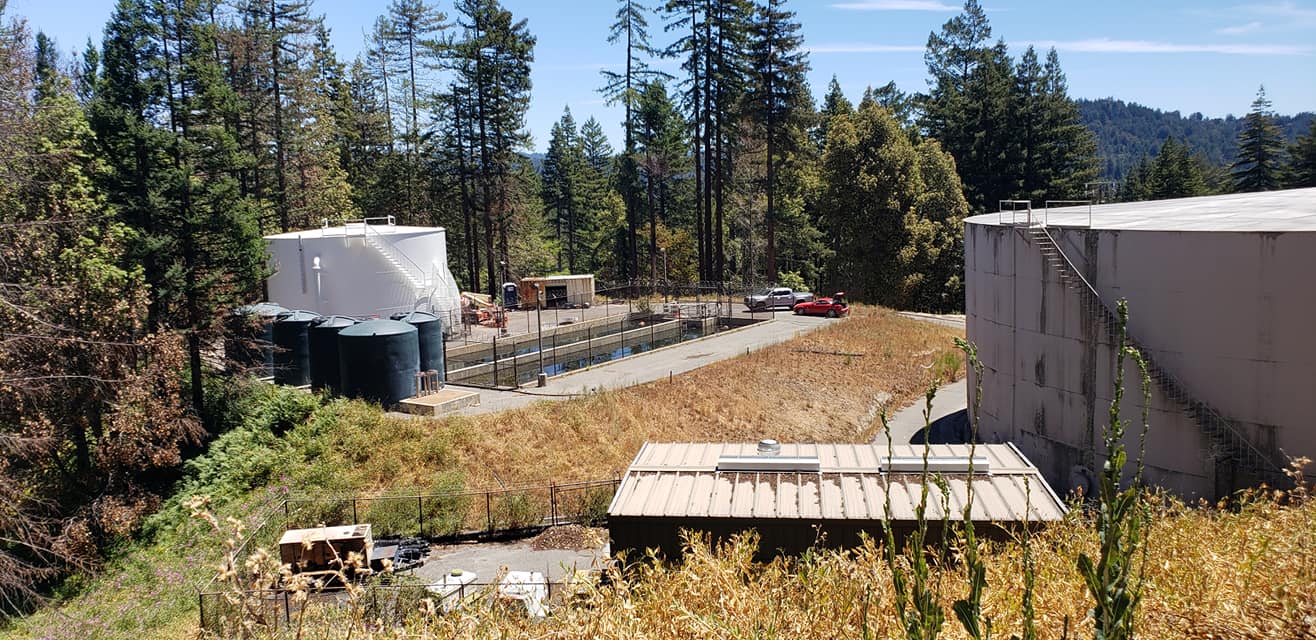

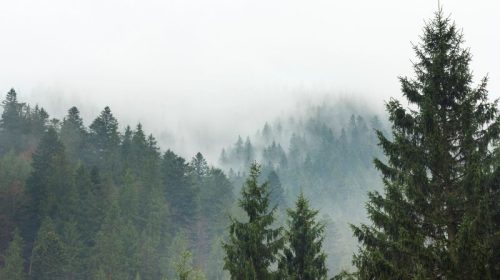
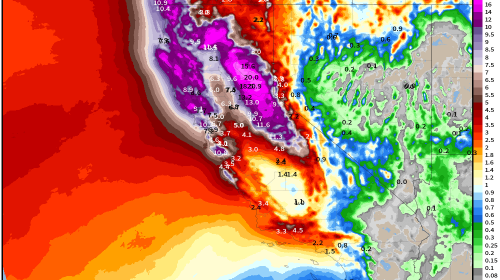

[…] https://slvpost.com/slv-water-and-czu-fire-recovery-an-update-from-the-san-lorenzo-valley-water-dist… […]